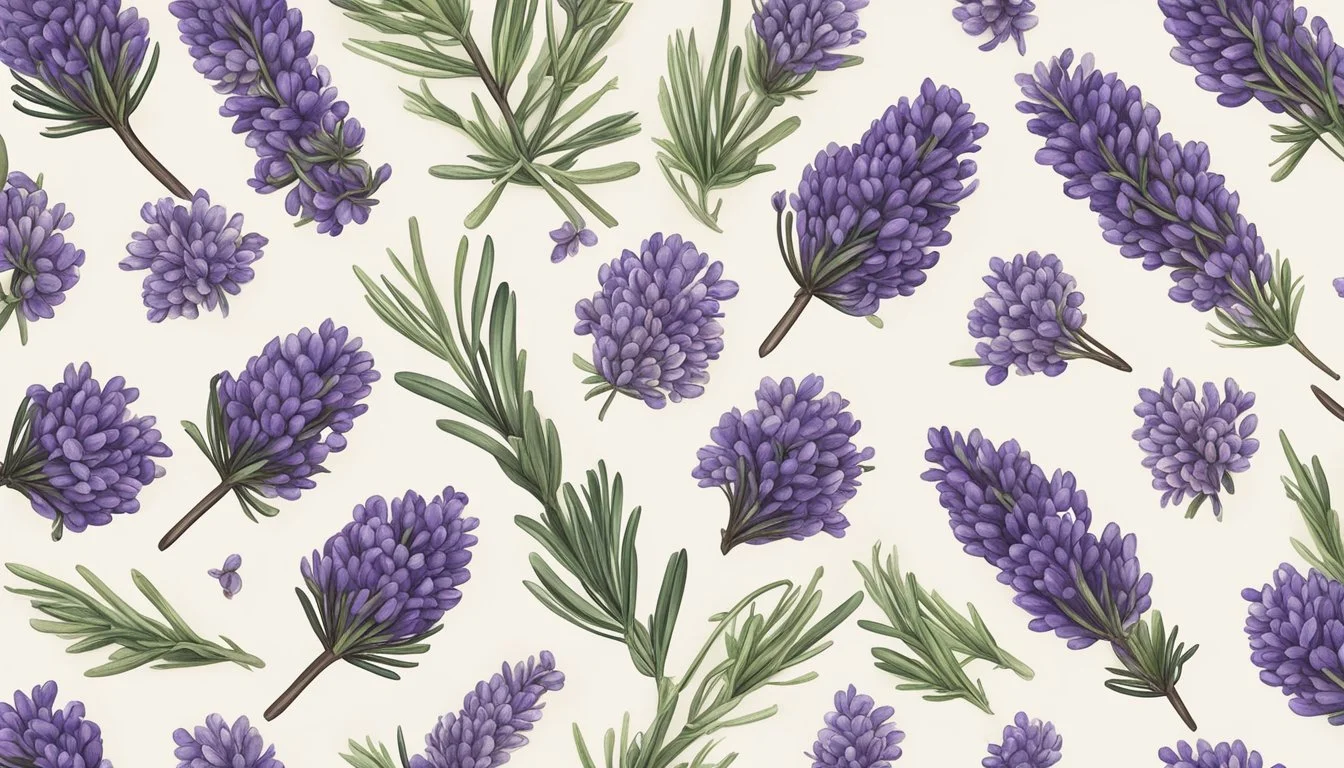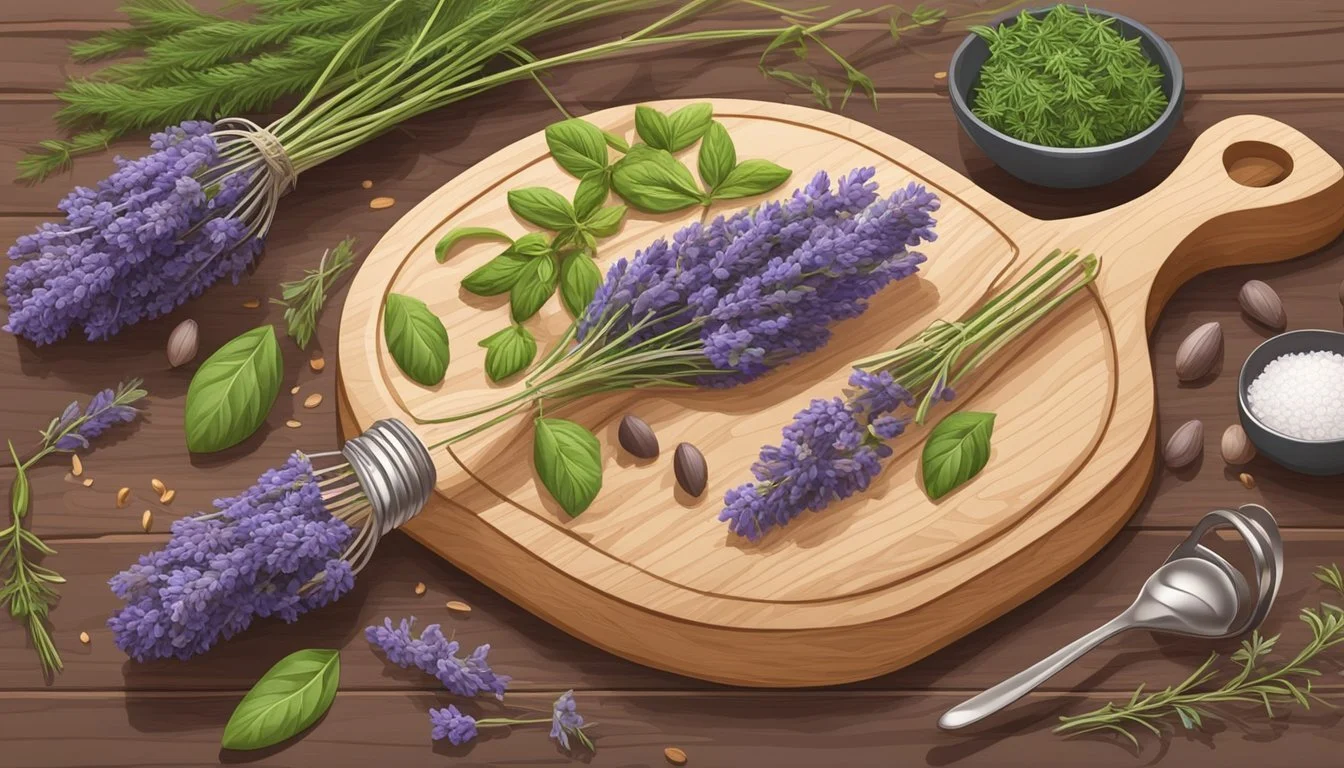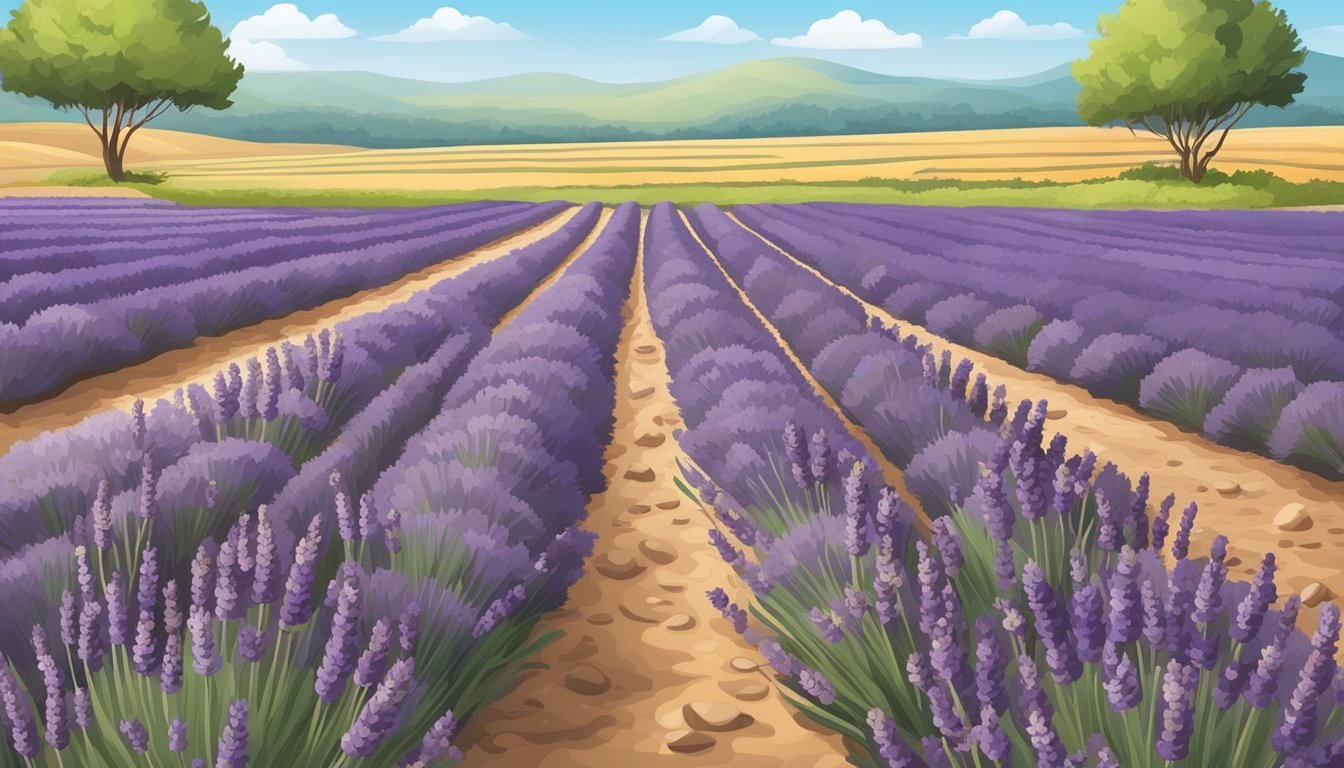Lavender Seeds Substitutes
Top Alternatives for Your Garden
For those who seek the unique flavor and aroma of lavender but find themselves without it, there are several effective substitutes that can replicate or complement its qualities. Herbs de Provence, a blend of thyme, rosemary, savory, marjoram, and oregano, can be used in equal measure to lavender. This mix brings a complex, herbaceous flavor profile to dishes.
When looking for a lavender substitute in aromatic applications like oils or diffusers, Sweet Basil essential oil and Clary Sage are excellent alternatives. Sweet Basil offers a citrusy sweetness, while Clary Sage provides an earthy and calming presence, both aiding in relaxation and clarity.
Gardening enthusiasts unable to grow lavender can consider planting Catmint or Russian Sage. These alternatives not only mimic the visual charm of lavender but also attract pollinators and possess medicinal properties. Whether for culinary uses, aromatic applications, or gardening, these substitutes ensure that the essence of lavender is never far away.
Understanding Lavender and Its Unique Characteristics
Lavender is a versatile and aromatic herb that holds several distinct features, from its cultivation process to its characteristic aroma. These intrinsic qualities make it a favorite in gardens, culinary arts, and natural remedies.
Cultivation and Growth of Lavender
Lavenders such as English Lavender and French Lavender thrive in well-drained, slightly alkaline soil with a pH of 6.5 to 7.5. Proper sunlight is crucial, needing at least 6-8 hours of direct sunlight daily. Ideal temperatures for its growth range between 70-85°F (21-29°C). Start seeds in containers with a seed starting mix and lightly press them into the surface. Watering should be done sparingly to avoid root rot, and overcrowding should be avoided to prevent stunted growth.
Lavender grown in gardens should be pruned regularly to promote healthy flowering and foliage. Hardy in USDA Zones 5 through 9, lavender can withstand temperatures down to 10°F (-12°C) without significant damage. Introducing seedlings gradually to the sun helps in acclimatization.
The Distinct Aroma and Flavors of Lavender
Lavender's aroma is recognized for its soothing and floral profile, which makes it popular in aromatherapy and essential oil production. The scent profile includes sweet and refreshing notes that can be both calming and uplifting.
The herb's unique flavor profile includes subtle citrus and minty undertones, making it a valued culinary herb. It can be used in teas, desserts, and savory dishes. The dried flowers and leaves are commonly infused in hot liquids or used to flavor baked goods. This aromatic quality is integral to creating blends for relaxation and culinary enjoyment.
These characteristics ensure that lavender remains an essential plant not only for its beauty but also for its aromatic and culinary applications.
Culinary Uses of Lavender
Lavender, a versatile herb with a distinctive floral aroma, enriches various culinary creations. It enhances desserts, meats, and beverages with its unique flavor profile.
Integrating Lavender in Desserts
Lavender lends a delicate, floral note that pairs beautifully with sweet treats. It can be incorporated into cakes and pastries to add a subtle aroma and flavor that sets desserts apart.
Lavender ice cream is a popular delicacy that combines the creamy texture of ice cream with the gentle taste of lavender.
When used in moderation, it prevents desserts from tasting like soap. Lavender syrup can be drizzled over desserts or mixed into batters. It's often seen in French pastries, complementing items like macarons and fruit tarts. Lavender-infused sugar can also be a delightful addition to baking recipes, providing that signature floral hint.
Savory Dishes and Meat Preparations
Lavender is not just for sweet dishes; it also enhances savory meals. It is a key ingredient in Herbes de Provence, a classic blend in French cooking.
Lavender pairs well with chicken and other poultry dishes, where its floral notes enhance the savory flavors. Rubs and marinades enriched with lavender offer a unique twist to roasted meats. In salads, fresh lavender flowers or leaves can be used for a surprising flavor boost.
Lavender can also be infused in bread recipes, adding an unexpected layer of taste to traditional staples. Balancing the floral notes with other herbs like rosemary or thyme ensures the lavender does not overpower the dish.
Beverages and Infusions with Lavender
Lavender adds a refreshing dimension to drinks. Lavender liqueur and cocktails are becoming increasingly popular. Infused in simple syrups, lavender can transform classic cocktails like a gin and tonic or a martini.
Herbal infusions with lavender are perfect for teas, offering a calming and fragrant brew.
Lavender lemonade is another favorite, blending tart lemon with floral lavender for a refreshing summer drink. Lavender also pairs well in warm milk or hot chocolate, adding an aromatic twist that soothes and relaxes.
In all these uses, it’s crucial to use culinary-grade lavender to ensure the best and safe flavor.
Popular Substitutes for Lavender in Cooking
Several herbs and ingredients can replace lavender in various culinary applications, offering similar aromatic and flavor profiles. These alternatives range from herbs in the mint family to citrus elements and other aromatic herbs.
Herbs Within the Mint Family
Herbs such as rosemary, thyme, and oregano can serve as excellent substitutions for lavender. Rosemary, with its pine-like, slightly minty flavor, works well in savory dishes. Thyme offers a more subtle, earthy taste that pairs well with meats and vegetables. Oregano holds a robust, slightly bitter flavor that can stand in for lavender, especially in Mediterranean dishes.
Mint, another member of this family, brings a refreshing, cool taste that can replace lavender in certain desserts and teas. Sage can also be utilized due to its slightly peppery and savory profile.
Exploring Citrus as a Lavender Alternative
Citrus elements like lemon zest or lemon balm introduce fresh, tangy notes that can substitute for lavender in both sweet and savory recipes. Lemon balm, in particular, offers a mild citrus flavor with subtle herbal undertones that can complement various dishes without overpowering them.
Likewise, orange zest can provide a sweeter, floral note, making it a suitable replacement in baked goods and desserts. Using citrus peels can also add a visually appealing element to your dishes, similar to how lavender buds might be used as a garnish.
Aromatic Herbs with Similar Flavor Profiles
Herbs such as chamomile and clary sage can mimic the floral essence of lavender. Chamomile, often used in teas, brings a gentle, apple-like flavor that can balance sweet and savory elements in recipes. Clary sage has a sweet, herbaceous quality that pairs well with a variety of foods.
For a more complex floral flavor, consider using Herbes de Provence, a French blend that typically includes rosemary, thyme, savory, marjoram, and oregano. This mixture can replace lavender in recipes where a more intricate taste is desired.
Using these substitutes thoughtfully can enhance your culinary creations while maintaining the unique, aromatic qualities that lavender provides.
Selecting and Preparing Lavender Substitutes
When selecting substitutes for lavender seeds, it is crucial to consider both the flavor profile and the intended use in a recipe. Using dried alternatives to fresh lavender can provide a similar aromatic experience while maintaining the dish's integrity.
Criteria for Choosing the Right Substitute
When choosing a lavender substitute, factors such as flavor profile, availability, and the type of dish matter. Herbs de Provence, for instance, contains a blend of thyme, rosemary, savory, and marjoram, making it a versatile substitute for lavender seeds.
Clary Sage offers a similar herbaceous aroma, ideal for both culinary and medicinal uses.
Rosemary provides a sweet mint and pine flavor but should be used in moderation due to its potency. One pro tip is to prioritize substitutes that match lavender’s aromatic profile to maintain the intended dish’s balance.
Using Dried Alternatives to Fresh Lavender
Dried alternatives should be measured carefully to match the potency of fresh lavender. Dry lavender works well in baked goods and marinades, though its flavor is less concentrated. A good practice is using 1.5 teaspoons of dry lavender for each teaspoon of lavender extract in recipes.
Sweet Basil essential oil offers a citrus sweetness that complements many dishes, while Parfait Amour liqueur can substitute in desserts due to its floral undertones. Always test a small amount first to avoid overpowering the dish.
To preserve flavor, store dried substitutes in an airtight container away from direct sunlight. This ensures that they retain their aromatic properties and continue to enhance your culinary creations effectively.
Cultural Significance and Varieties
Lavender holds notable cultural significance, especially in French and Mediterranean cuisine, and boasts a variety of species with unique characteristics and uses.
Lavender in French and Mediterranean Cuisine
Lavender's aromatic properties make it a beloved herb in French and Mediterranean cuisine. In the Provence region of France, it is a key ingredient in the well-known herb blend Herbs de Provence, which also includes rosemary, thyme, oregano, and marjoram.
In these cuisines, lavender is often used to flavor meats, stews, and even desserts.
French culinary traditions frequently incorporate lavender in baking, where it adds a delicate floral note to sweets like cakes and cookies.
Mediterranean dishes utilize lavender to infuse oils and vinegars, providing a unique twist to salads and marinades. The subtle, sweet flavor of lavender complements both savory and sweet recipes, making it an essential herb in these regions.
Different Species of Lavender and Their Uses
Several species of lavender are cultivated for their distinct scents and uses. Spanish Lavender (Lavandula stoechas) is known for its striking dark purple flowers and strong aroma, making it ideal for ornamental purposes and essential oils.
Common Lavender (Lavandula angustifolia) is prized for its soothing fragrance and is often used in aromatherapy. This species is also the primary choice for culinary applications due to its mild flavor.
Lavandin (Lavandula x intermedia), a hybrid of Common Lavender and Spike Lavender, offers a more intense scent and greater oil yield, making it popular in commercial production.
These varieties serve diverse purposes, from enhancing culinary dishes to providing therapeutic benefits and decorative charm.
Non-Culinary Applications of Lavender
Lavender is renowned for its versatile uses beyond the culinary realm. Its relaxing aroma and therapeutic properties make it a staple in aromatherapy and perfumery, while its visual and aromatic appeal enhance gardens and landscapes.
Lavender in Aromatherapy and Perfumery
Lavender is a cornerstone in aromatherapy due to its calming and soothing effects. The essential oil extracted from lavender flowers is used in diffusers to reduce stress and anxiety. Many people apply diluted lavender oil to the skin to aid sleep and manage headaches.
In perfumery, lavender provides a fresh, floral scent that balances other fragrances like citrus and wood. It is often included in classic Eau de Cologne and modern perfume formulations, adding a soft, powdery nuance. The versatility of lavender oil makes it a favored choice in a variety of scented products, from candles to skincare items.
Lavender in Gardening and Landscaping
Lavender is widely admired for its contribution to gardening and landscaping. When incorporated into garden designs, lavender plants serve both aesthetic and practical purposes. Their vibrant purple flowers create striking visual contrasts, and the plant’s aromatic foliage adds a sensory dimension to outdoor spaces.
Gardeners value lavender for its drought-resistant properties and ability to attract pollinators like bees and butterflies, boosting the ecosystem. It's commonly used in borders, rock gardens, and as hedging, providing structure and fragrance. Additionally, dried lavender bundles can be used as natural insect repellents, enhancing the garden’s functionality.
By integrating these elements, lavender elevates the visual appeal and ecological health of garden environments. Its ease of maintenance and multifunctional use make it a popular choice for both novice and experienced gardeners.








